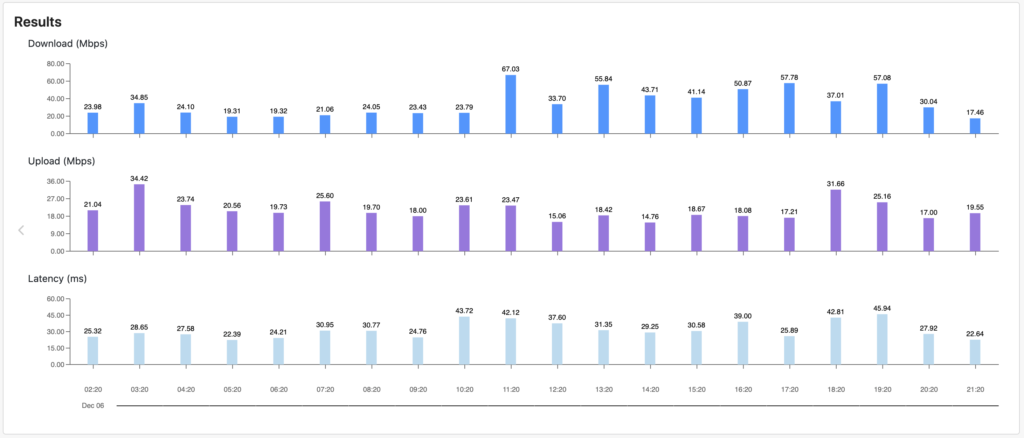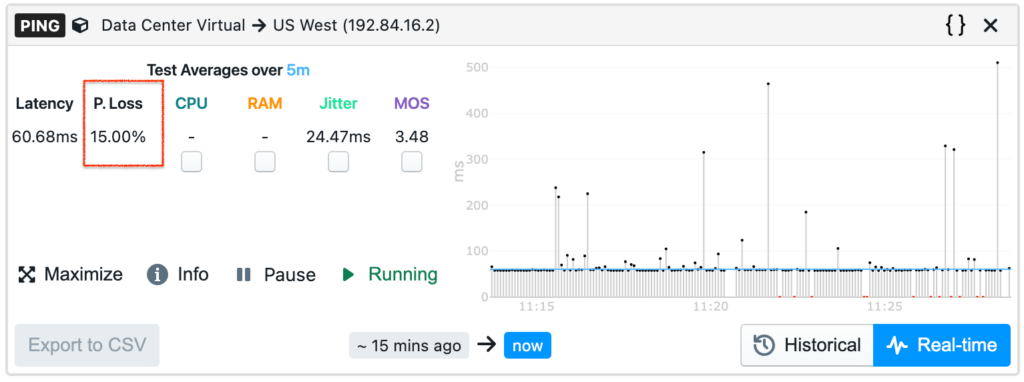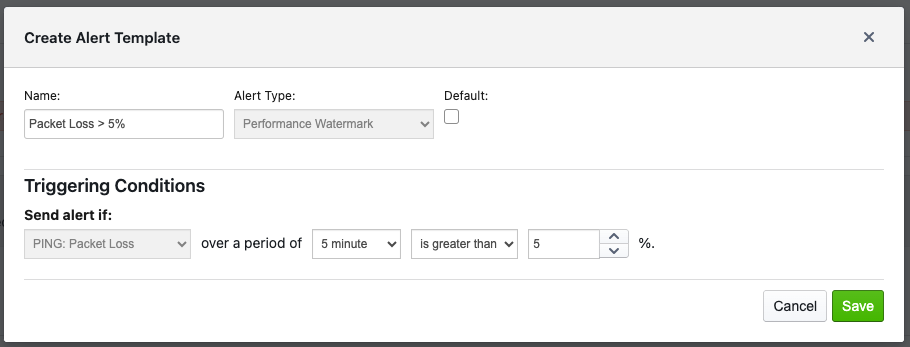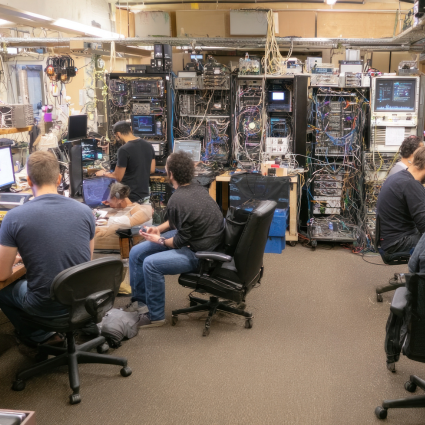Understanding Service Level Agreement Monitoring
Service Level Agreement Monitoring verifies that one or more services meet the performance requirements established between a service provider and a consumer. These performance requirements are defined via metrics and targets that are included in a Service Level Agreement (SLA).
SLAs can be structured in two ways:
- As a customer based SLA, tailored to individual client needs and covering multiple services.
- As a service based SLA, which applies universally to all users of a particular service.
SLAs can cover all the services provided to a customer, ensuring comprehensive coverage and flexibility. Two parties set service level objectives to ensure the IT service provider understands how to meet the customer’s expectations, with the expected level of service defined as a contractual benchmark. SLA breaches occur each time a service provider doesn’t satisfy the service levels set. Additionally, an SLA serves as a reference point to resolve disputes regarding service quality or performance.
SLA management is a dynamic process that involves ensuring the fulfillment of service agreements with customers. The key components of Service Level Agreement monitoring include defining metrics, monitoring performance, and reporting results. In this article we’ll focus on monitoring and reporting SLA results.
Importance and Benefits of SLA Monitoring
Service Level Agreement monitoring enables service providers and subscribers to enforce service availability and performance. The goal is to ensure customer satisfaction.
There are several reasons why SLA performance monitoring is important:
- Accountability – Subscribers ensure that the service provider meets the customer’s standards set before the service agreement. This is particularly important for annual or multi-year contracts where the customer is locked in until its term. Comparing current performance to past results helps ensure continuous improvement.
- Performance measurement – Measuring performance through continuous checks and tracking SLA performance metrics helps service providers identify underperforming areas. This continuous audit enables the provider to work on improvements, maximizing service delivery and performance.
- Proactive monitoring – Monitoring enables quick issue detection, allowing for proactive management and resolution before they impact the customer. Proactive monitoring enables service providers to limit unexpected downtime that will impact customer support and satisfaction. Using monitoring tools to monitor metrics in real time further enhances the ability to address issues promptly.
- Trust and transparency – Many service providers offer a status dashboard that makes it easy to verify availability and performance. These dashboards and/or reports are generally the output of SLA monitoring tools that the provider is using.
- Data analysis – After monitoring SLAs, it is crucial to analyze the gathered data to identify issues affecting service performance. Analyzing historical data and historical data helps identify trends and ensure SLA compliance. This analysis helps in addressing root causes and improving service delivery.
The Service Level Agreement monitoring process involves collecting and analyzing key metrics. This is accomplished via SLA dashboards and SLA reports. These tools and processes help organizations track SLA performance metrics, ensure compliance, and provide actionable insights for continuous improvement.
Effective SLA monitoring supports customer retention and enhances customer experience by ensuring high availability and performance.
Risks of Inadequate Monitoring
Conversely, a service provider with subpar SLA monitoring risks undermining overall business performance and increasing the risk of security breaches due to unaddressed vulnerabilities.
Here are some of the risks of inadequate monitoring:
- Network downtime and service interruptions – Without SLA monitoring, a network outage or other performance issues can go unreported. This leaves it to the customers to identify problems. This reduces the overall uptime, service continuity, and impacts the consistency of the service provided.
- Financial penalties – When a service provider doesn’t meet the SLA defined, is liable for service credits and repair costs. These penalties will impact the bottom line and financial performance of the business. SLA violations can result in significant financial consequences for failing to meet contractual obligations.
- Decreased customer satisfaction – A service provider that fails to meet or exceed defined goals and objectives will inevitably frustrate customers. Poor service provider performance can lead to customer churn and reduction in contract renewal rates.
- Damage to business reputation – Frustrated customers who cancel a service may damage the business reputation. This often leads to more revenue losses due to negative word of mouth.
- Remedies for unmet service levels – SLAs should always include remedies or penalties for unmet service levels to ensure accountability. This strategy incentivizes adherence to agreed standards. It is important to ensure service providers meet the agreed-upon standards and commitments outlined in the SLA.
Setting Customer Expectations
Setting customer expectations is a foundational element of successful service level agreements (SLAs). A well-crafted SLA acts as a roadmap, clearly defining the services provided, the expected service levels, and the metrics used to measure performance. This clarity ensures that both the service provider and the customer have a mutual understanding of what constitutes quality service and how it will be delivered.
Effective SLA monitoring and regular reporting play a vital role. It demonstrates that the agreed-upon service levels are being met, which reassures customers and strengthens the business relationship.
Service level management should include ongoing reviews and updates to the SLA, reflecting any changes in business needs or service offerings. This proactive approach helps ensure that customer requirements are consistently met. It also ensures that the service provider remains aligned with the customer’s evolving requirements.
Ultimately, the delivering the expected level of service through clear SLAs and diligent monitoring is key to delivering quality service and building long-term partnerships.
Best Practices for Effective SLA Monitoring
A service provider that implements an effective SLA monitoring will need to follow best practices that will allow it to meet customer expectations. These best practices should be consistently applied across all those services covered by the SLA. By following these simple steps, a service provider can meet its business goals with proper SLA management and performance.
Establishing Clear SLA Metrics and Objectives
First of all, it’s important to define clear SLA metrics that satisfy the customer objectives. The SLA monitoring process begins with identifying key metrics that align with customer objectives, ensuring that the most relevant and impactful indicators are tracked. These metrics capture the key performance indicators of the customer’s requirements and quality of service expectations.

During this phase, the service provider staff may need to meet with the customer to set service level objectives of the services that are key to the customer’s business. The metrics defined should be easily and accurately measurable. Moreover, both parties agree on the methods of monitoring and reporting against these metrics. The SLA should include a protocol for adding and removing metrics to keep it relevant to changing business needs.
Example of SLA metrics
We report some common metrics included in most SLA: availability, response time, error rates, and mean time to recovery. Error rates measure the frequency of service failures and instances where performance dips below acceptable standards.
Here’s a high level definition of common metrics:
- Uptime/Availability: Percentage of time the service is operational in a given time frame.
- Incident Response Time: Time taken to acknowledge a service request or incident.
- Resolution Time: Time taken to resolve a service request or incident.
- Mean Time to Repair (MTTR): Average time taken to repair a service failure.
Other network performance metrics of interest include latency, packet loss, throughput, and more.
Implementing Robust Monitoring Tools
The SLA monitoring software plays a crucial role in executing the SLA monitoring strategy effectively. Robust monitoring tools are essential to monitor metrics and monitor service level agreements, ensuring advanced visibility, observability, and alignment with business needs. Historical performance analysis is essential for understanding trends over time with regard to SLA fulfillment.
Here are three important requirements that should be considered when selecting a robust network monitoring tool:
- Real-time data: A real-time network monitoring system minimizes the time that it takes for an event, or measurement, to be reported to the operator for alertings, and reporting. Such a SLA monitoring system provides the high definition of the service monitored, allowing the service provider to be more proactive with unplanned downtime.
- Threshold alerts and notifications: Threshold alerts and notifications activate when performance metrics approach or fall below set thresholds, allowing for proactive issue management. This real-time awareness helps prevent SLA breaches, minimize downtime, and ensure high service reliability.
- High availability: High availability is vital for monitoring tools to ensure continuous, reliable operation, minimizing downtime through failover mechanisms and redundancy. Together, these features ensure consistent SLA tracking and reporting, helping organizations meet their commitments and maintain high service standards.
Ensuring Customer Communication with Reports and Service Status Dashboards
To ensure effective customer communication, many service providers provide periodic reports about the status and performance of the services offered as well as service status dashboards. SLA dashboards and SLA reports are key elements of effective SLA reporting and customer communication, enabling real-time monitoring, analysis, and visualization of SLA performance across multiple services and locations.
Periodic reports are used to verify that the service offered met the contractual agreement, and include any financial penalties caused by SLA breaches. Service status dashboards provide a real-time snapshot of the services to both the provider and the customer. Both elements are part of a proactive communication that helps manage expectations, reduces uncertainty, and builds confidence in the service provider’s commitment to meeting SLA targets.
By offering clear and simple reports and accessible service status dashboards, service providers can enhance customer satisfaction and foster a transparent, reliable relationship.
Performance Metrics Analysis
Analyzing performance metrics is at the heart of effective SLA monitoring. Service providers rely on key performance indicators (KPIs) such as response time, resolution time, and service availability to measure performance against the agreed upon service levels. By closely tracking these metrics, service providers gain valuable insights into their service delivery and can quickly identify areas that require improvement.
Network monitoring tools and software automate the collection and analysis of performance data, making it easier to spot trends, detect potential issues, and ensure compliance with service level agreements. Regular analysis of these metrics not only helps in maintaining service quality but also enables service providers to make data-driven improvements. For example, if analysis reveals a pattern of delayed response times, the provider can investigate root causes and implement targeted solutions to improve performance.
By continuously monitoring and analyzing performance metrics, service providers can proactively address service gaps, reduce the risk of SLA breaches, and consistently meet or exceed customer expectations. This commitment to performance metrics analysis is essential for delivering reliable, high-quality services and maintaining strong customer relationships.
Resolution Time Optimization
Optimizing resolution time is a critical factor in meeting the service levels outlined in a service level agreement. Resolution time refers to how quickly a service provider can resolve incidents or fulfill service requests, and it directly impacts customer satisfaction and the perception of service quality.
To achieve optimal resolution times, service providers should streamline their incident management processes, leverage automation where possible, and ensure that their teams are equipped with the right tools and information. SLA monitoring and reporting play a key role in this process by highlighting bottlenecks and identifying opportunities for improvement. Service providers can pinpoint areas where delays occur and implement targeted strategies to enhance efficiency.
Continuous monitoring and analysis of these metrics not only help in meeting customer expectations but also drive ongoing improvements in service delivery. By prioritizing resolution time optimization, service providers can deliver quality service, minimize downtime, and ensure that they consistently meet or exceed the agreed-upon service levels.
Common Challenges in SLA Monitoring
There are many challenges that present to organizations that are looking to monitor and set service level objectives. Below are some of the most common problem areas:
- Inaccurate data: Ensuring the accuracy and reliability of the data collected for SLA monitoring can be difficult, especially when integrating data from various sources and systems, which can lead to inconsistencies and errors.
- Ambiguous metrics: Creating clear, quantifiable metrics that accurately reflect service performance is challenging. The more complex the service that is rendered by a provider, and the more detailed and specific needs to be the definition of the SLA metrics that will be monitored.
- Alert fatigue: Difficulty in setting appropriate thresholds could lead to excessive alerts that are difficult to prioritize. This situation can lead to alert fatigue, where important notifications may be ignored by the service provider.
- Tool integration: Integrating SLA monitoring tools with existing IT infrastructure and systems can pose compatibility issues. Ensuring the tools can scale with the growth of the business and service demand.
NetBeez Continuous Monitoring
Leveraging NetBeez for streamlined SLA monitoring offers several advantages in enhancing service level management and performance tracking. NetBeez provides real-time monitoring into network and application performance through active monitoring agents deployed across the infrastructure. These monitoring agents enable service assurance as well as proactive identification of potential issues before they impact a service provider’s performance, ensuring minimal downtime and SLA compliance.
Key Performance Indicators
NetBeez supports comprehensive metrics collection, including latency, packet loss, and throughput, facilitating accurate reporting and analysis. Below are some of the most common SLA metrics in NetBeez:
- Network latency and packet loss
- DNS resolution time and service uptime
- HTTP response time and service uptime
- Download speed, upload speed, and latency
- Wi-Fi connection timing, including authentication and DHCP
The data reported by the network agents is sent in real-time to the dashboard for immediate visualization and alerting. Should an SLA violation occur, NetBeez can send a notification to the service provider’s on-call team for quick resolution.

Threshold Alerts
NetBeez offers a simple yet powerful way to define and enforce service level agreements. Thanks to user-defined alert profiles, it is possible to address critical issues promptly, enhancing overall service reliability and customer experience. Some of the most common alert profiles include:
- Up-down detector
- Performance changes based on short-term and long-term moving averages
- Performance changes based on fixed values
For instance, the network administrator can create an alert that triggers when the packet loss is greater than 5% (see below screenshot), HTTP response time is more than 2 seconds, or the internet download speed is less than 20 Mbps. The service desk team can receive a notification via email as a result of this alert, streamline SLA monitoring processes.

Service Status Dashboards
NetBeez supports a JSON-based API that allows service providers to build custom service status dashboards. This helps maintain high service standards consistently and streamline SLA monitoring processes. The customers to see in real-time the status of the services.

Future of SLA Monitoring
The future of SLA monitoring is poised for significant transformation as technology continues to advance and customer expectations rise. Service providers will increasingly leverage artificial intelligence (AI) and machine learning (ML) to automate SLA monitoring, enabling faster detection of service disruptions and more accurate prediction of potential issues. These technologies will empower service providers to optimize service delivery, reduce manual intervention, and ensure that service levels are consistently met.
Real-time monitoring and analytics will become standard, allowing service providers to respond instantly to incidents and minimize the impact of service disruptions. The adoption of cloud-based SLA monitoring software will also accelerate, offering greater flexibility, scalability, and accessibility for managing service agreements across diverse environments.
As digital services become more integral to business operations, the importance of robust SLA monitoring and reporting will only grow. Service providers will need to stay ahead of evolving customer expectations by continuously refining their monitoring processes, embracing new technologies, and maintaining a strong focus on service quality. By doing so, they can ensure compliance with agreed upon service levels, deliver exceptional customer experiences, and maintain a competitive edge in the marketplace.
Conclusion
In conclusion, service level agreement monitoring is crucial for maintaining high service standards and ensuring customer satisfaction. It holds service providers accountable, enables proactive issue management, and provides transparency through service status dashboards and reports. However, inadequate monitoring can lead to network downtime, decreased customer satisfaction, financial penalties, and reputational damage. Revising SLAs periodically is necessary to adapt to changing business needs and service requirements. Effective SLAs require ongoing collaboration and communication between the service provider and the customer.
By following best practices, such as establishing clear metrics, implementing robust monitoring tools, and ensuring effective communication, service providers can meet and exceed their SLA targets. Leveraging solutions like NetBeez can further enhance monitoring, providing real-time insights, threshold alerts, and customizable dashboards to optimize performance and reliability.





